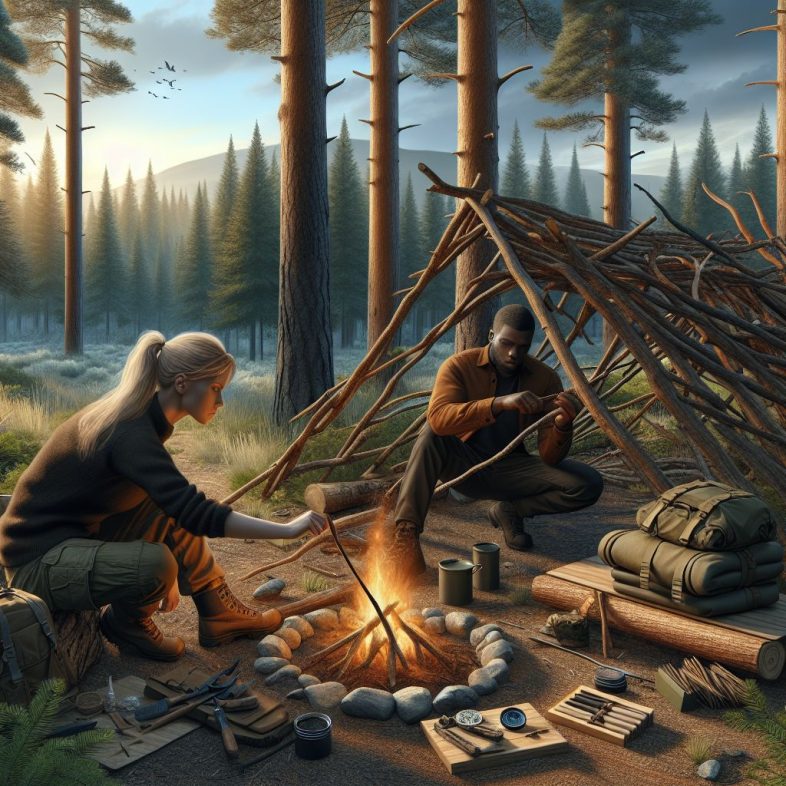Key Takeaways
- Survival in the wilderness starts with Skills for Outdoor Enthusiasts and a solid understanding of your environment and the ability to assess priorities such as shelter, water, and food.
- A well-equipped survival kit, including a sturdy knife and fire-starting tools, is crucial for any outdoor adventure.
- Knowing how to find and purify water can save your life, so familiarize yourself with various water sources and purification methods.
- Foraging for food is a skill that requires knowledge of edible plants and insects, as well as safe hunting and trapping practices.
- Navigation skills and the ability to signal for help are key components of wilderness survival and can greatly increase your chances of rescue.
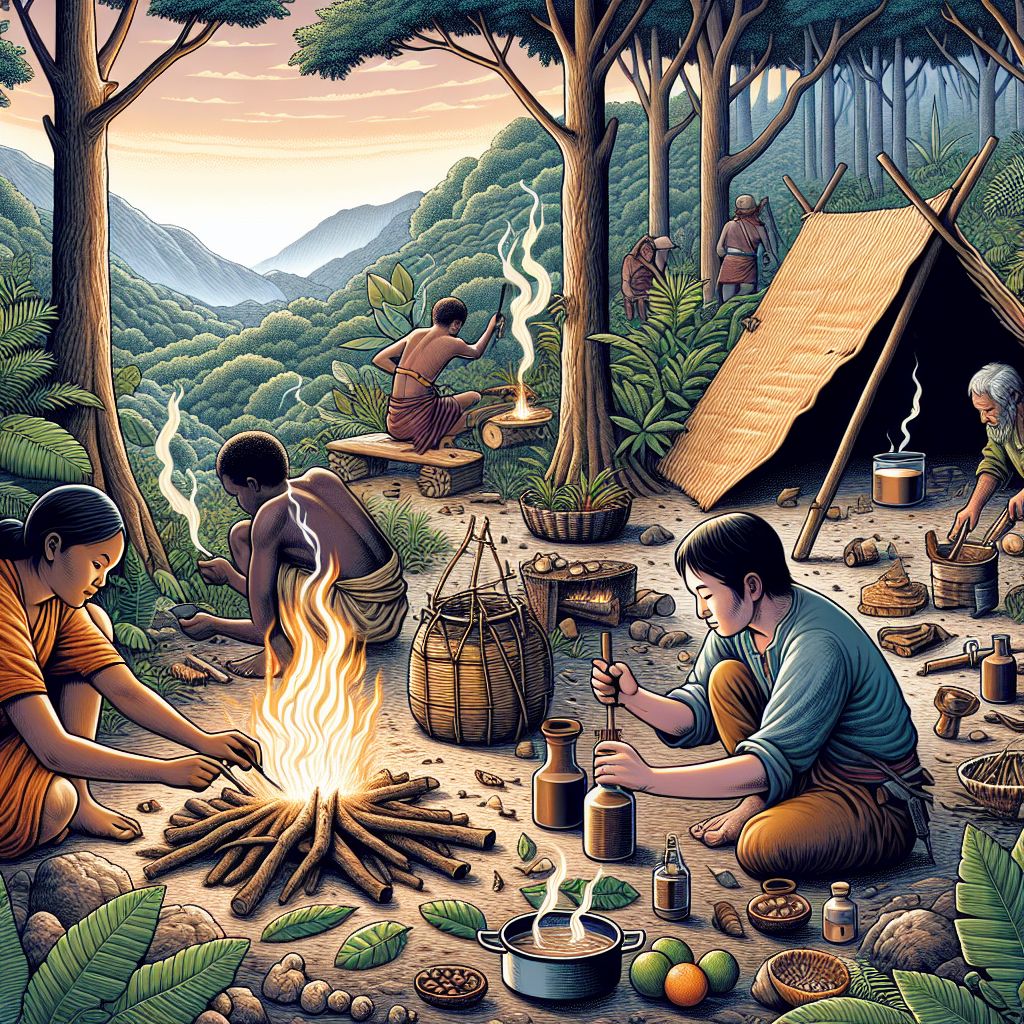
Master the Basics of Wilderness Survival
When you’re miles away from civilization, surrounded by nature’s untamed beauty, the right knowledge and skills can mean the difference between a thrilling adventure and a dire emergency. Let’s dive into the essentials of wilderness survival, where preparation meets practice.
Understanding Your Environment with Skills for Outdoor Enthusiasts
Whether you’re trekking through dense forests, scaling mountainous terrains, or crossing arid deserts, the first step is always to understand your surroundings. Pay attention to the lay of the land, weather patterns, and any potential hazards like swift rivers or unstable ground. This awareness will guide your decisions and help you adapt to changing conditions.
Assessing Your Survival Priorities
In any survival situation, priorities matter. Your immediate needs are shelter, water, fire, and food, in that order. Shelter protects you from the elements, water keeps you hydrated, fire provides warmth and a means to cook, and food sustains your energy levels. Remember, staying calm and making well-thought-out decisions can save your life.
Must-Have Tools for Any Outdoor Adventure
Heading into the wild without the right gear is like sailing without a compass. You need to be prepared for anything nature throws your way.
Choosing the Right Survival Knife
The cornerstone of any survival kit is a reliable knife. It’s not just a tool; it’s a lifeline. Look for a fixed-blade knife with a full tang for durability and strength. Whether you’re building a shelter, preparing food, or making kindling for a fire, a sharp, sturdy knife is indispensable.
The Essential Wilderness Survival Kit
Your survival kit should be tailored to the environment you’ll be exploring but here are some universal items to include with your Skills for Outdoor Enthusiasts :
- A multi-tool for various tasks
- Water purification tablets or a portable filter
- A fire starter, such as waterproof matches or a flint striker
- A durable, compact first aid kit
- A whistle and mirror for signaling
- A map and compass for navigation
These tools are your lifelines in the wilderness. Pack wisely and handle them with care.
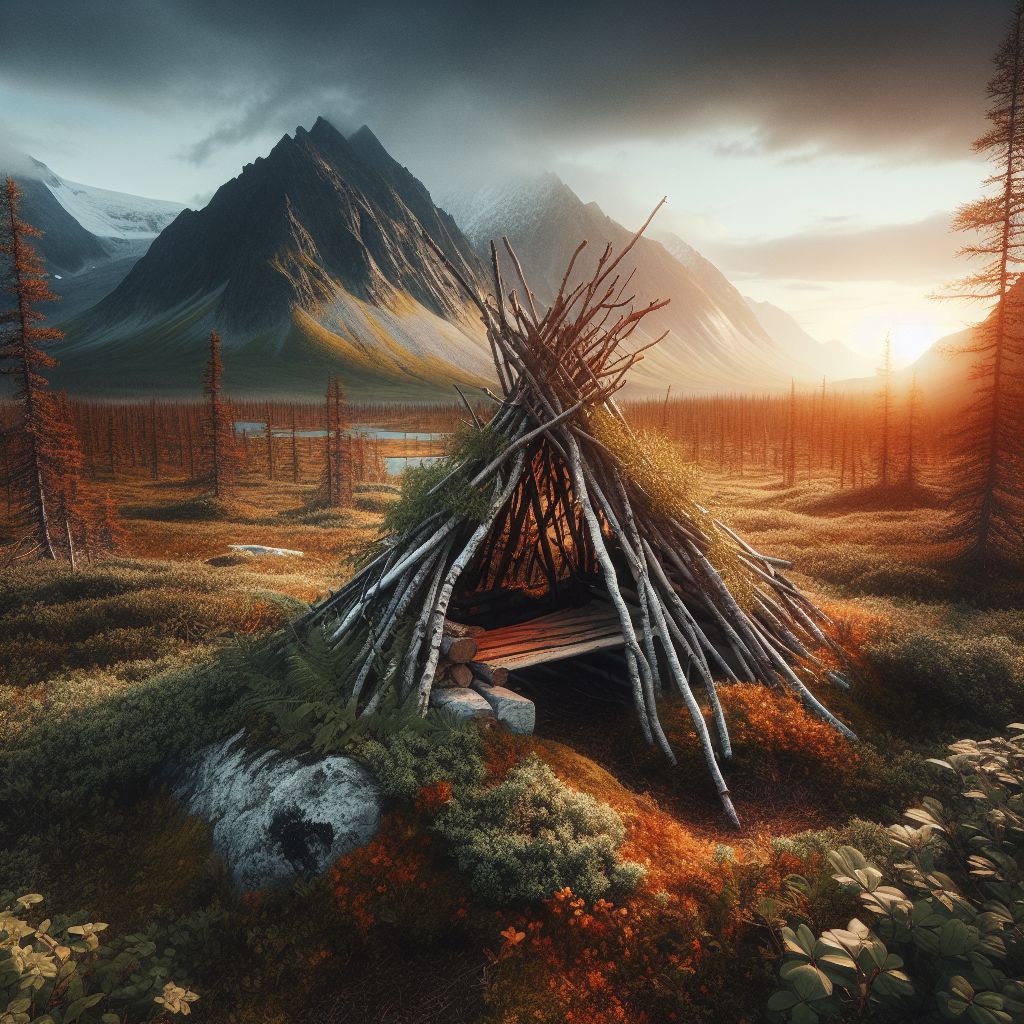
Shelter: Your First Line of Defense
When the sun is setting, and the temperature drops, shelter becomes your first priority. It’s about staying dry, warm, and safe from the elements and wildlife.
Natural Shelters vs. Man-Made Shelters
Nature sometimes provides caves or overhangs that can offer immediate shelter. However, when these aren’t available, you’ll need to build your own. Man-made shelters can range from a simple lean-to made of branches to a more elaborate debris hut insulated with leaves and moss.
Step-by-Step Shelter Building
Here’s how to construct a basic lean-to shelter:
- Find two trees close together and a long, sturdy branch to serve as a ridgepole.
- Lean the ridgepole against the trees at an angle to create a spine for your shelter.
- Gather smaller branches to lean against the ridgepole, creating a wall.
- Insulate the structure with leaves, grass, and debris for warmth and water resistance.
This shelter can be a lifesaver when you need protection fast.
Finding and Purifying water
Water is your most critical resource. You can survive weeks without food, but only days without water. Finding a clean source is a top priority and one of your best Skills for Outdoor Enthusiasts.
Locating water Sources in Nature
Water flows downhill, so head for lower ground if you’re searching for a stream or river. Remember, still water is a breeding ground for pathogens. Always aim for flowing water where possible.
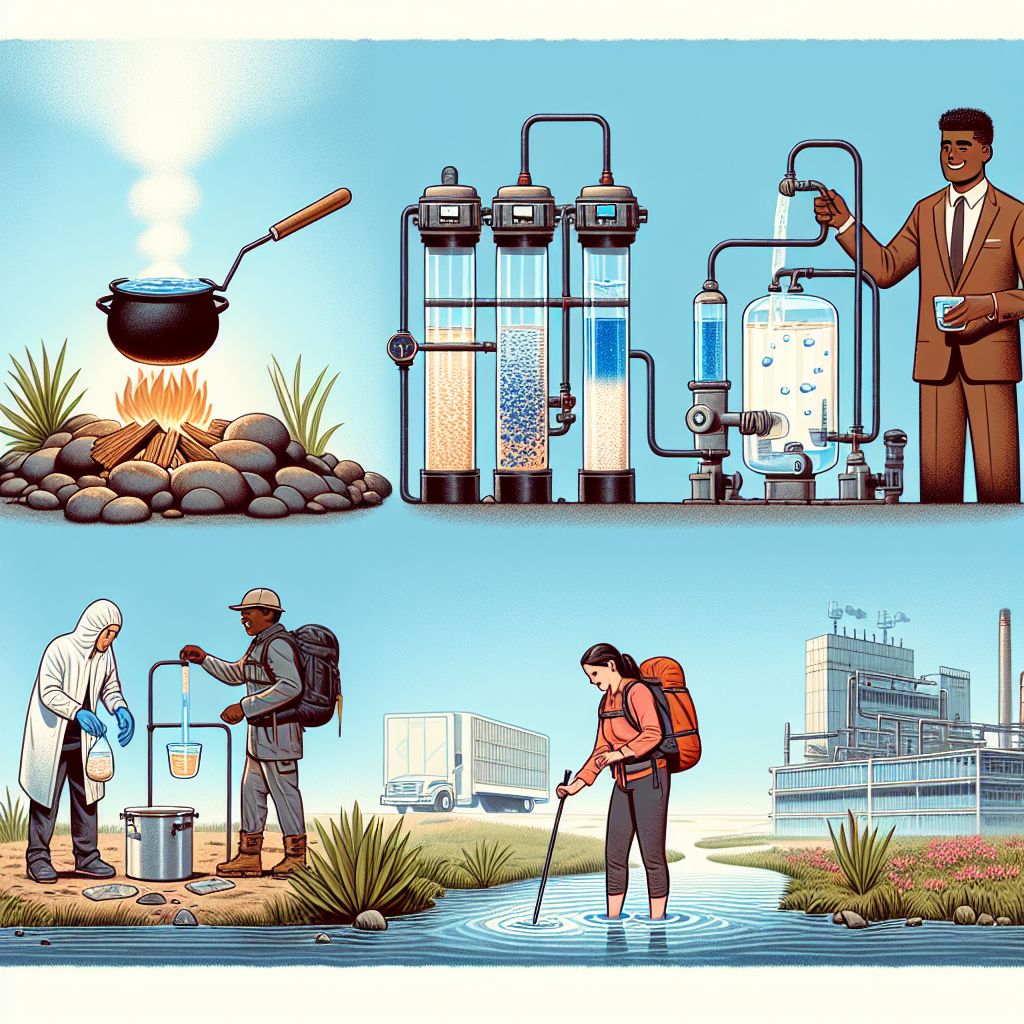
Water Purification Techniques
Once you’ve found water, it must be purified to make it safe to drink. Boiling is the most reliable method, but if you can’t start a fire, use purification tablets or a filter. Sunlight can also purify water through UV radiation, so consider clear plastic bottles left in direct sunlight for several hours.
Navigating the Wilderness
Once you have shelter and water, your next challenge is navigating the wilderness. Whether you’re on a planned route or find yourself unexpectedly off the beaten path, the ability to find your way is crucial, use the Skills for Outdoor Enthusiasts that you have gained.
Reading Maps and Using Compasses
A map and compass are your best friends in the great outdoors. To use them effectively, you need to understand the map’s scale, symbols, and contour lines. Align your map with the landscape around you, and use the compass to orient yourself in the right direction. It’s a skill that might seem old school, but in the wilderness, it’s timeless.
Practice at home before you go. Set up a course in a local park and work on translating what you see on the map to the real world. It’s like a puzzle where the reward is confidence in your ability to navigate anywhere.

Natural Navigation by Landmarks and Stars
When technology fails, nature provides. You can use the sun’s position to establish direction—remember, it rises in the east and sets in the west. At night, find the North Star (Polaris) in the Northern Hemisphere, which stays fixed in the sky while other stars rotate around it.
- During the day, use the shadow stick method: Place a stick upright in the ground and mark the tip of its shadow. Wait about 15 minutes, and mark the end of the new shadow. The line between the two marks runs east-west.
- At night, locate the Big Dipper constellation. Draw an imaginary line between the two stars at the end of the ‘cup’ and follow it upwards. The first bright star you hit is the North Star.
These methods have guided travelers for centuries and can guide you too.
Making Fire Anywhere, Anytime
Fire is your beacon of warmth, protection, and comfort in the wilderness. It can cook your food, purify your water, and signal for help.
Friction-Based Fire Making Techniques
Friction-based fire making is the most primitive and challenging method, but it’s a vital skill. The bow drill method is the most effective of the friction techniques:
- Gather a spindle (straight stick), fireboard (flat wood), bow (bent stick with a string), and tinder.
- Carve a small depression in your fireboard, place the spindle inside, and use the bow to spin the spindle rapidly.
- The friction creates hot dust that smolders into a coal. Transfer this to your tinder nest and gently blow it into flame.
It takes practice, but once mastered, you’ll feel like you can conquer anything.
Modern Fire-Starting Tools
For a more reliable and less labor-intensive option, carry modern fire-starting tools:
- Waterproof matches or a lighter are quick and easy ways to start a fire.
- Ferrocerium rods produce sparks when struck and work even when wet.
- Firestarter gels or blocks can help ignite even damp tinder.
Combine these tools with natural tinder like dry grass, leaves, or bark, and you’ll have a roaring fire in no time.
Wilderness First Aid
Accidents happen, and in the wilderness, a small injury can become a big problem if not treated properly. First aid knowledge is essential.
Handling Common Outdoor Injuries
From minor cuts and blisters to more serious injuries like sprains or animal bites, knowing how to respond is crucial. Keep wounds clean to prevent infection, and learn how to immobilize a sprain or broken limb with splints or bandages.
Example: If you get a blister while hiking, don’t pop it. Clean the area, apply an antiseptic, and cover it with a bandage or moleskin. This will protect it from bursting and becoming infected.
Remember, your first aid kit is only as good as your knowledge of how to use it. Take a wilderness first aid course to prepare for the unexpected.
Creating an Emergency Medical Kit
Your emergency medical kit should include:
- Bandages and gauze of various sizes
- Antiseptic wipes and creams
- Pain relievers and anti-inflammatory drugs
- Blister treatment supplies
- Tweezers and scissors
- Medical tape and safety pins
Customize your kit based on the length of your trip, the size of your group, and any personal medications or needs.
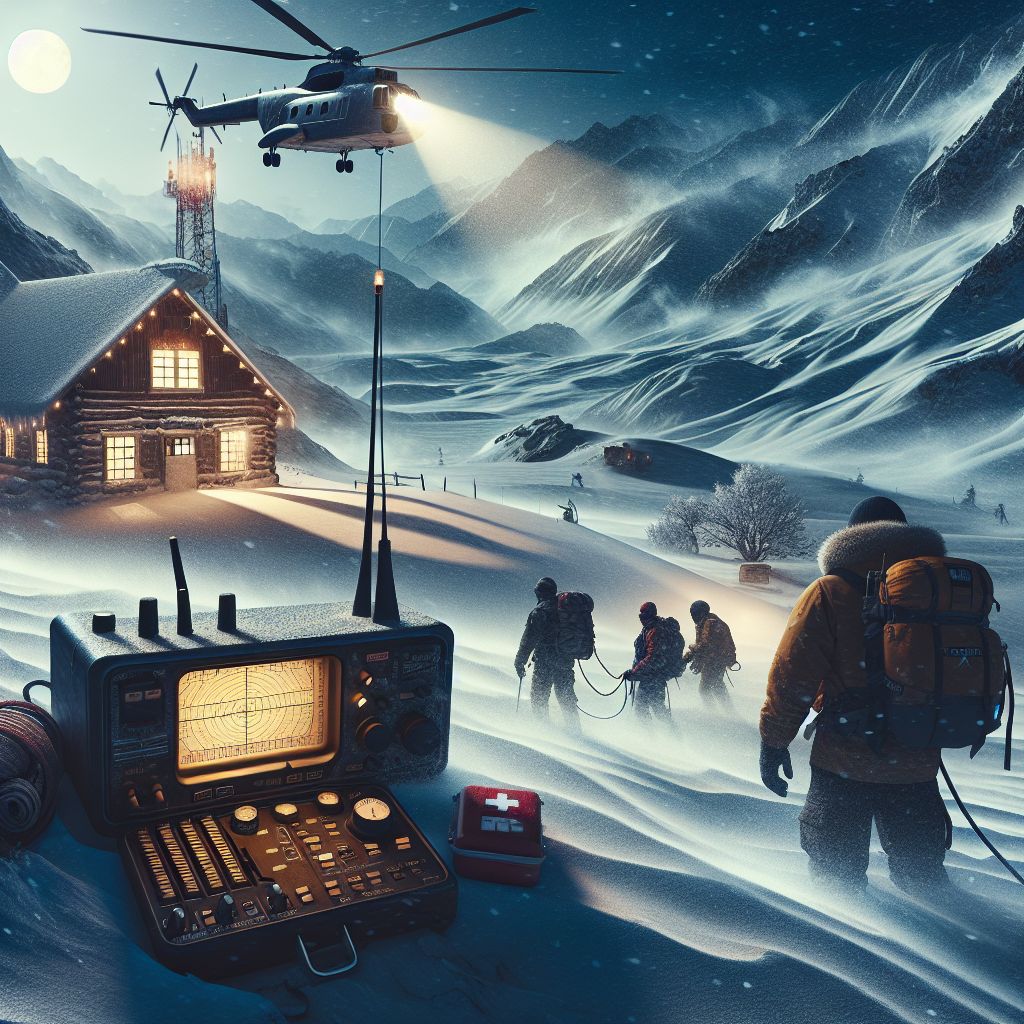
Emergency Signals and Rescue
When you’re in trouble, signaling for help is vital. It’s important to have multiple methods at your disposal.
Visual and Audible Signaling Methods
Visual signals like brightly colored clothing, mirrors, or smoke can catch rescuers’ eyes. Audible signals, such as whistles or banging metal objects together, carry over long distances and can direct rescuers to your location.
- Use a mirror or any reflective surface to create flashes of light.
- Make three piles of green branches to produce smoke for a smoke signal.
- Blow your whistle in bursts of three, the universal signal for distress.
Remember, three of anything is a standard distress signal.
When and How to Seek Rescuers
If you’re lost or injured, decide whether to stay put or move. If you’re injured or if moving will put you in more danger, stay in place and signal for help. If you’re uninjured and have a clear path to safety, it may be best to move toward rescue.
Wildlife Encounters and Safety
Wilderness means wildlife, and knowing how to handle an encounter can ensure your safety and that of the animals.
Predator Awareness and Avoidance
Most animals will avoid humans, but if you do encounter a predator, stay calm. Make yourself appear larger, back away slowly, and never run. Running can trigger a predator’s chase instinct.
Understand the behavior of local wildlife before you venture out. For example, if you’re in bear country, make noise as you hike to avoid startling one.
With these wilderness survival guide tips and skills, you’re well on your way to becoming a confident outdoor enthusiast. Remember, the wilderness demands respect. Go prepared, stay aware, and embrace the adventure.
Wilderness survival isn’t just about enduring the elements; it’s about coexisting with the creatures that call it home. Encountering wildlife is part of the adventure, but it’s crucial to maintain a respectful distance and understand the behavior of the animals you might meet. This not only ensures your safety but also protects the natural habitat and the creatures within it.
Coexisting with Wildlife
Whether you’re watching a deer from afar or spotting a curious raccoon, remember that you’re a guest in their home. Store food properly to avoid attracting animals to your campsite, and never feed wildlife. It’s not good for their health, and it can lead to dangerous encounters.

Survival Mindset and Mental Toughness
“Survival is 90% mental. It’s not the mountains ahead to climb that wear you out; it’s the pebble in your shoe.” – Muhammad Ali
Mental toughness is the bedrock of survival. It’s about the will to persevere, the determination to make it through, and the mindset to see challenges as opportunities to learn and grow.
Developing a survival mindset starts with preparation and practice. The more skills you master, the more confident you’ll become. And with confidence comes the mental toughness needed to face any situation.
But it’s not just about skills; it’s also about attitude. Stay positive, focus on solutions, and remember that every problem has a way out.
Overcoming Fear and Panic
Fear is natural, but panic is a survivalist’s enemy. When faced with a daunting situation, take deep breaths, assess your circumstances, and rely on your training. Break down tasks into manageable steps and tackle them one by one. Remember, you have the tools and the know-how; you just need to apply them calmly.
Staying Focused and Motivated
Motivation can wane when you’re cold, hungry, and tired. Set small goals, celebrate your successes, and remind yourself why you’re out there. Maybe it’s the love of nature, the thrill of adventure, or the satisfaction of self-reliance. Whatever your reason, hold on to it. It will be your beacon through tough times.
- Set achievable goals and work towards them systematically.
- Keep a positive attitude, even when things get tough.
- Remember past successes and use them to fuel your determination.
What’s Next? Taking Your Skills Further
Survival skills are like a muscle; they need to be exercised to stay strong. Continue learning, practicing, and challenging yourself. Join survival courses, practice your skills on weekend trips, and read up on the latest survival techniques.
Additional Training and Resources
There’s a wealth of knowledge waiting for you. Seek out local survival schools, online courses, and books on wilderness survival. Learning from experienced instructors and experts can provide insights and techniques that could one day save your life.
And don’t forget to share your knowledge. Teaching others not only reinforces what you’ve learned but also builds a community of prepared adventurers.
Planning Your Next Wilderness Adventure
With each trip, you’ll gain more experience and confidence. Plan your next adventure with your new skills in mind. Maybe it’s navigating with a map and compass, fishing for your dinner, or building a shelter from natural materials. Each journey is an opportunity to test yourself and grow.
How long can a person survive without water?
The human body can survive for about three days without water, but this can vary based on factors like temperature, humidity, and the individual’s physical condition. Always prioritize finding a water source when you’re in the wilderness.
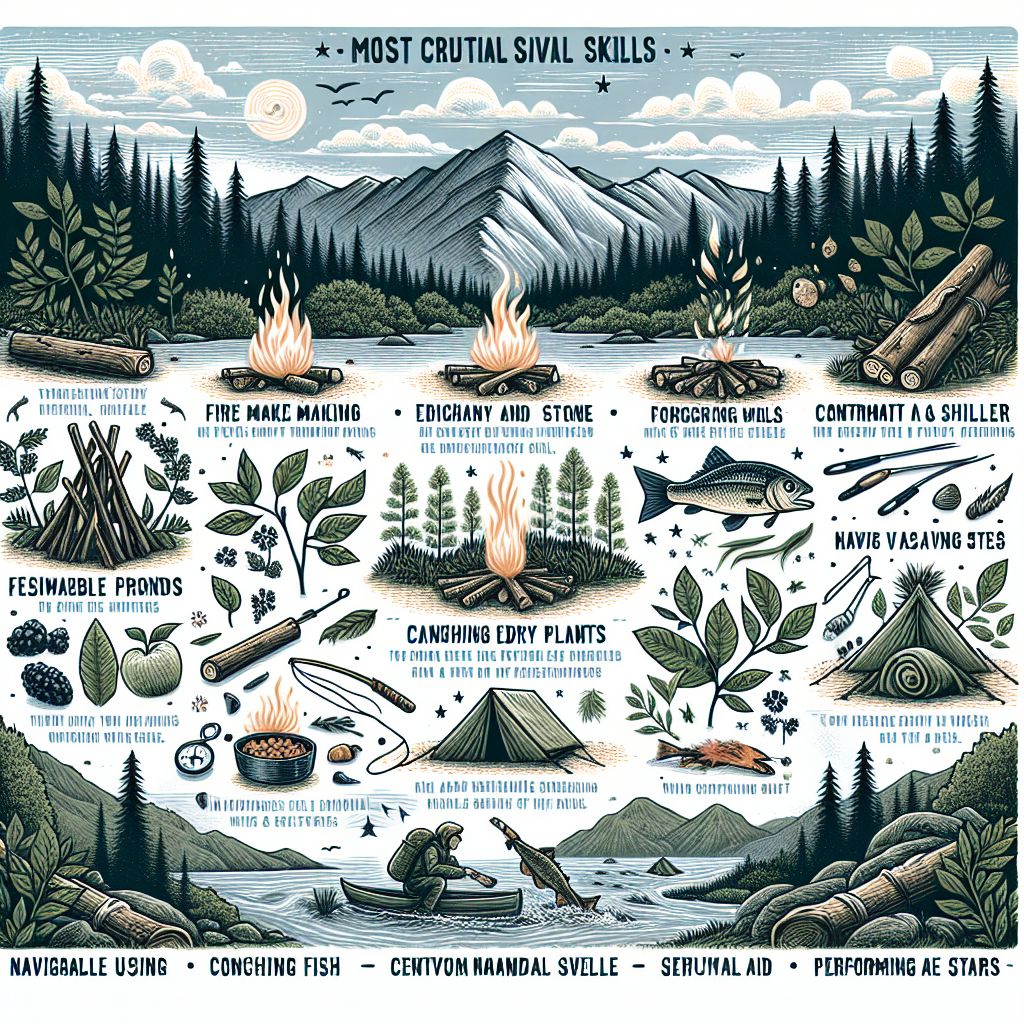
What are the most important survival skills?
The most important survival skills include:
- Building a shelter
- Finding and purifying water
- Making a fire
- Foraging for food
- Navigating the wilderness
- Administering first aid
How do you make sure your fire is safe from spreading?
To prevent your fire from spreading, clear a 10-foot diameter area around it, removing all flammable materials. Build a containment ring with rocks, and never leave the fire unattended. Extinguish it completely before leaving, using water or dirt, and ensure the ashes are cold to the touch.
Can you rely on wild plants for nutrition?
While many wild plants are edible and nutritious, it’s essential to know which ones are safe to eat. Misidentifying plants can lead to illness or worse. Invest time in learning about local flora, and when in doubt, don’t eat it.
What is the best way to signal for help if you’re lost?
The best way to signal for help is to use the universal distress signal of three: three blasts on a whistle, three fires in a triangle, or three flashes with a mirror. These signals are internationally recognized as calls for help.
Now that you’re equipped with these wilderness survival guide tips and skills, you’re ready to take on the great outdoors with confidence. Always remember, your safety and the preservation of nature go hand in hand.
So gear up, skill up, and step into the wild with respect and readiness. And if you’re looking to enhance your survival knowledge further, make sure to check out the detailed guides and resources at Save Yourself – Wilderness Survival Tips, Tools, And Guide. Whether you’re an experienced hiker or just starting, you’ll find invaluable information to prepare for your next wilderness adventure.
